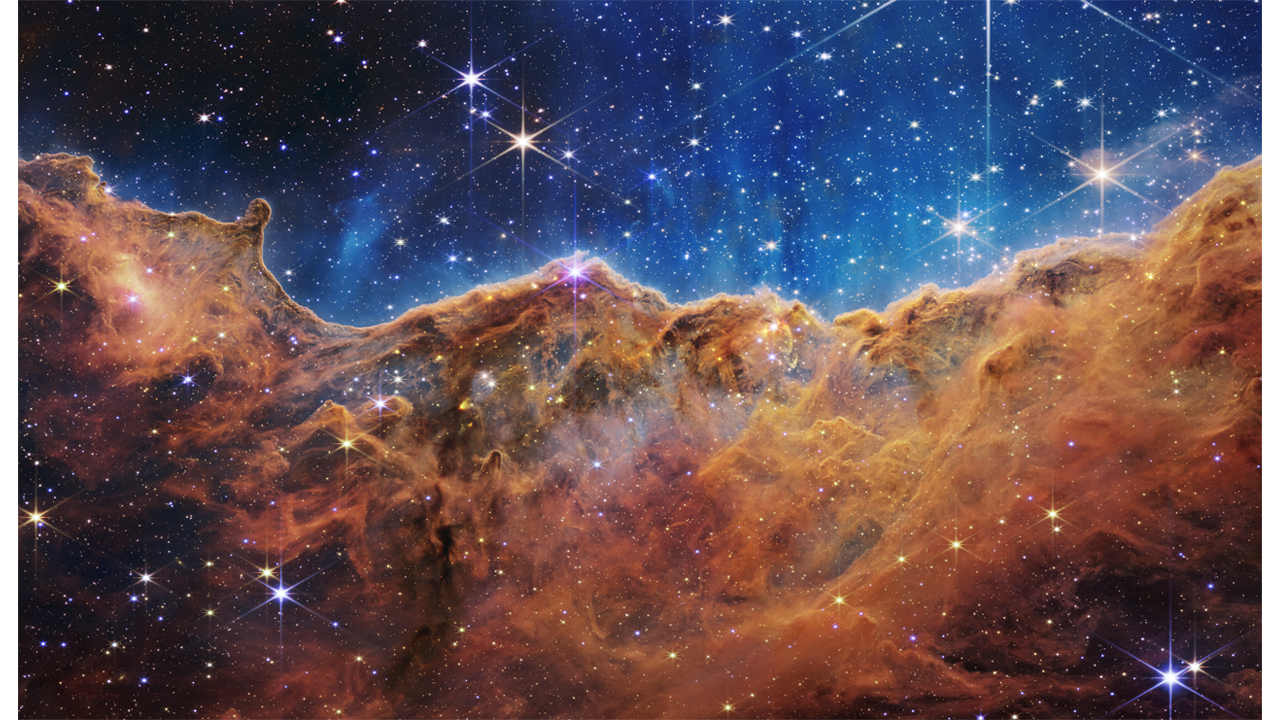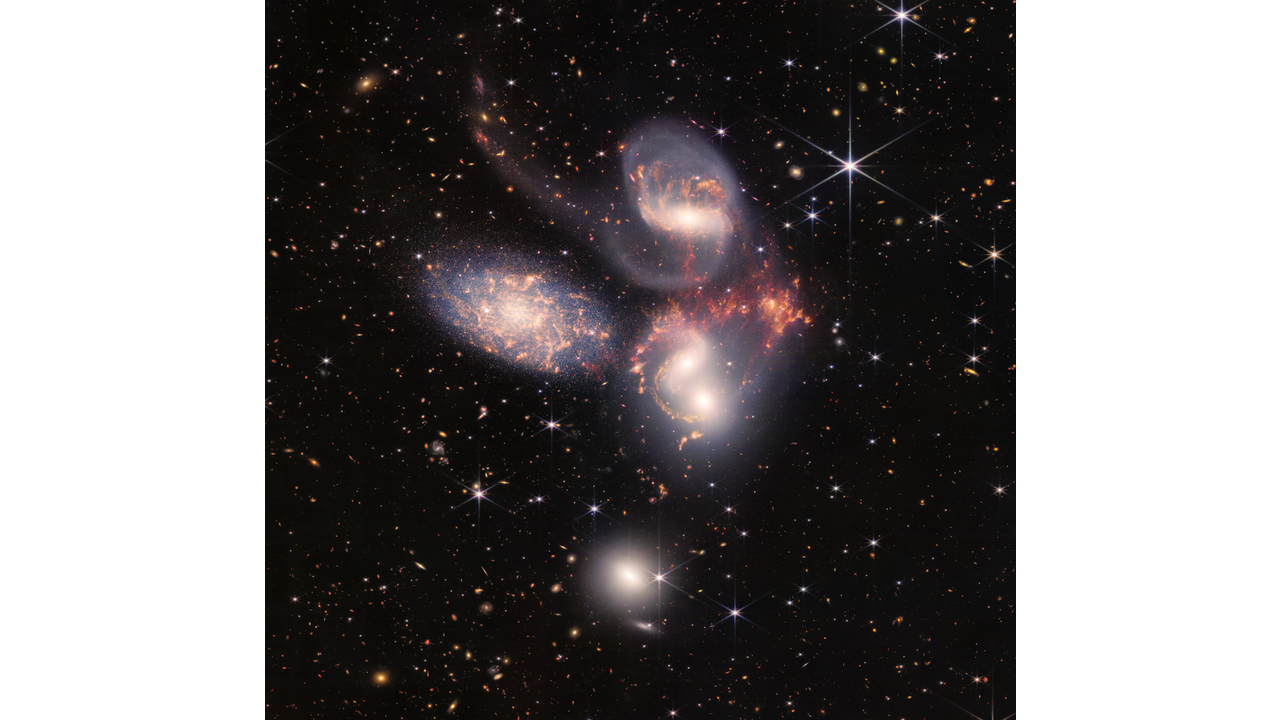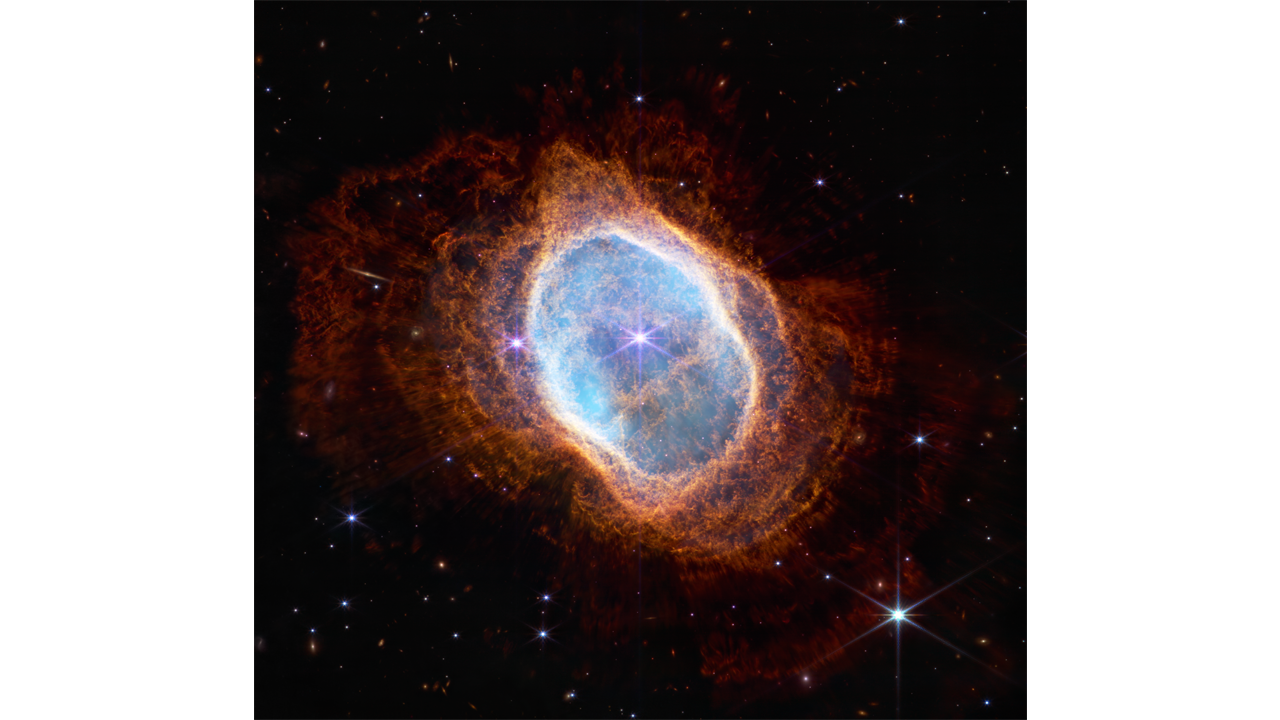🙊 If you’ve been anywhere near civilization in the last few days, all everyone seemed to care about was the first images captured by James Webb Space Telescope (JWST) shared by NASA. Okay but what are we really seeing in those images and why is everyone even comparing them to Hubble? Also, why the images colord if JWST operates in the infrared range? Are these images edited or processed in any way since there seems to be some motion distortion or circular lines kinda light in the middle of the first Deep Field image? Let’s try to answer some of these questions and more.
🇨🇦 In case you didn’t know, Canada is a partner in the new space telescope which was primarily build and paid for by the United States and launched aboard a French Ariane rocket late last year. Since then, mission scientists have been putting Webb through its paces. The elaborate start-up process included using a Canadian-built instrument called the Fine Guidance Sensor to align the telescope’s 18 gold-plated mirror segments and create a seamless reflecting surface 6.5 metres across. The result makes Webb the largest astronomical observatory ever to fly in space.
🍿 Here are some technical facts/details simplified for us common folks who don’t speak astronomy.
- 🚀 JWST launched on 25th December 2021. It is now a million miles away from Earth it took almost 6 months for the telescope to unfold itself.
- 🚀 Hubble telescope launched in 1990 is only 340 miles away from the Earth, so we can imagine how significant JWST is going to be for future explorations.
- 🌞 JWST is solar powered and also has a propulsion system, since it's solar powered it has to stay in close proximity to the Sun.
- 🌎 JWST will not orbit the Earth, like Hubble. Instead, it will be in an orbit around the Sun; around an invisible point in space known as an Earth-Sun Lagrange point.
- 👀 JWST works in the Optical range but it is basically designed for near-infrared regions of space.
- ⏳ It takes approximately 6 seconds for JWST to send back a signal to the Earth, It sends signals through high-frequency radio transmitters and NASA receives these signals with the help of its radio antennas which are a part of NASA's Deep Space Network.
- 🤯 Yes!!! As baffling as it sounds, we are indeed looking 13 billion years in the past.
I know it sounds bizarre but light takes time to travel through space. Even the sun's light reaches us after 8 minutes.
So, basically, the light that is being captured by JWST is 13 billion years old, close to when the big band happened. We can say we are literally looking in the past, through time.
- 🚫 No, the image isn't "distorted" or "blurred" in the middle, it is curved like that due to the phenomenon of "Gravitational lensing". It isn’t caused by a black hole but the combined mass of a massive galaxy cluster named SMAC 0723.
- 💫. All the little tiny objects and the spirals, and the barred, the oval-shaped blobs and the other disfigured shiny objects all of them are galaxies! Yes, we live in the Milky Way galaxy and these are other galaxies in space; each galaxy contains billions of stars and each star can have its own solar system much like our own. Now, think of the depth and the magnitude of this image holds.
- 🎨 No, the images aren't colored when they receive them. The colors in the image are synthetic. Colored filters are used in the telescope, they record the image in black and white. Combining several shots of the same field obtained at different wavelengths, it is possible to show what they would have looked like to the human eye, although the color palette will always be, to some degree, artificial, since much of the light in the infrared is invisible.
- 🔦 According to NASA the JWST will focus on four main areas: first light in the universe, assembly of galaxies in the early universe, the birth of stars and protoplanetary systems, and planets (including the origins of life.)
Let’s talk about another image.

- The “steam” that appears to rise from the celestial “mountains” is actually hot, ionized gas and hot dust streaming away from the nebula due to intense, ultraviolet radiation.
- Dramatic pillars rise above the glowing wall of gas, resisting the blistering ultraviolet radiation from the young stars.
- Bubbles and cavities are being blown by the intense radiation and stellar winds of newborn stars.
- Protostellar jets and outflows, which appear in gold, shoot from dust-enshrouded, nascent stars.
- A “blow-out” erupts at the top-center of the ridge, spewing gas and dust into the interstellar medium.
- An unusual “arch” appears, looking like a bent-over cylinder.

An enormous mosaic of Stephan’s Quintet is the largest image to date from NASA’s James Webb Space Telescope, covering about one-fifth of the Moon’s diameter. It contains over 150 million pixels and is constructed from almost 1,000 separate image files. Sweeping tails of gas, dust and stars are being pulled from several of the galaxies due to gravitational interactions. Most dramatically, Webb’s MIRI instrument captures huge shock waves as one of the galaxies, NGC 7318B, smashes through the cluster. These regions surrounding the central pair of galaxies are shown in the colors red and gold.

The bright central star visible here has helped “stir” the pot, changing the shape of this planetary nebula’s highly intricate rings by creating turbulence. The pair of stars are locked in a tight orbit, which leads the dimmer star to spray ejected material in a range of directions as they orbit one another, resulting in these jagged rings.
Hundreds of straight, brightly-lit lines pierce through the rings of gas and dust. These “spotlights” emanate from the bright star and stream through holes in the nebula like sunlight through gaps in a cloud.
But not all of the starlight can escape. The density of the central region, set off in teal, is reflected by how transparent or opaque it is. Areas that are a deeper teal indicate that the gas and dust are denser – and light is unable to break free.
This is not only a crisp image of a planetary nebula – it also shows us objects in the vast distances of space behind it. The transparent red sections of the planetary nebula – and all the areas outside it – are filled with distant galaxies.
Look for the bright angled line at the upper left. It is not starlight – it is a faraway galaxy seen edge-on. Distant spirals, of many shapes and colors, also dot the scene. Those that are farthest away – or very dusty – are small and red.
Thanks all this week friends, I don’t think either you or me have any energy left to talk about weekly favorites this week.
Take Care!
Sadia 🖖
